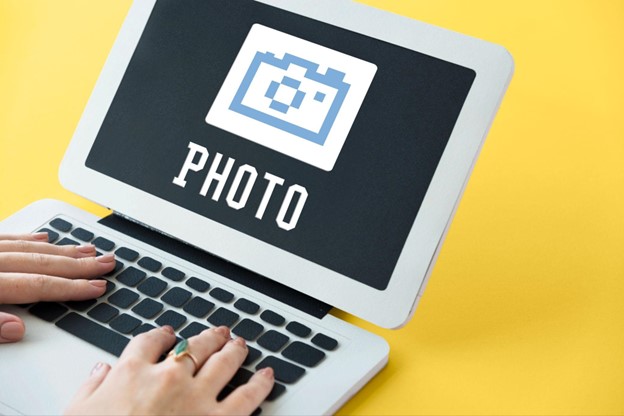An Explanatory Guide on Using Stock Images for Business
Understanding the Role of Stock Images in Business

Striking visuals are essential for capturing attention, fostering client connections, and effectively conveying your brand’s story. In this sense, stock images provide businesses with an affordable, hassle-free alternative to custom photography, eliminating the need for expensive shoots and time-consuming edits. From enhancing social media campaigns to elevating corporate presentations, photo banks offer versatile, ready-to-use solutions tailored to any business need.
But how exactly do stock images impact business success, and which platforms deliver the best value? Read on to find answers and uncover tools to transform your visual materials.
What are royalty-free photo stocks?

Royalty-free photo stocks are platforms that provide images any business, self-employed person, or creative individual can use personally and commercially without paying recurring royalties after initial purchase or subscription. These photo banks make professional-quality visuals accessible and affordable while featuring simplified licensing models.
Key features of royalty-free photos are:
- One-time payment. Once licensed, a user can utilize an image repeatedly for multiple purposes without extra costs;
- Variety of licensing terms. Though royalty-free doesn’t mean unrestricted, it mainly allows commercial use within the provided terms, such as in websites, product packaging, social media campaigns, and more;
- Convenient access. Many platforms offer vast collections of stock images for different customer needs and visual preferences. Hundreds of curated visual collections are updated regularly to enable businesses to build long-term marketing campaigns.
Why use stock images for business materials

As businesses can now reach customers faster and easier using digital channels, being first to contact and impress can be crucial, nudging users to act quickly in the brand’s favor. The visual impression is important here, making photo banks a go-to solution for companies.
The main reason for turning to image stock platforms is their cost-efficient alternative to hiring photographers. It takes a few moments to subscribe to a specific plan and get high-quality stock photos for a business website, social media product description, or promoted content. In comparison, finding a skilled photographer, arranging a session, commuting, taking photos, and waiting for an email with polished photographs can take days or weeks. These reasons make stock photo platforms continuously grow, reaching a whopping $8 billion market size by 2029, with a steady annual growth of 7%.
Other compelling reasons are:
- Legal compliance in marketing and branding activities. Using trusted photo banks means you never have to worry about legal aspect when using visuals in marketing and branding;
- A strategic choice for SMEs and large firms. Image marketplaces provide multiple plans suitable for companies of all sizes;
- Versatile options for improving a brand’s multichannel presence. Vast collections enable companies to improve their content calendars with various formats perfect for websites, blogs, ads, presentations, and internal communication.
4 best stock image platforms for business purposes
#1 – Depositphotos

Depositphotos is a top-rated stock content platform featuring audiovisual files for any creative project and commercial need. It offers high-quality, unique photos, vectors, illustrations, editorial materials, videos, music tracks, and sound effects. Depositphotos is an excellent choice for your marketing, branding, and creative goals.
With over a decade of successful operation, Depositphotos has become one of the best stock photo sites for businesses and creative solopreneurs. Specifically, users highlight a friendly interface and superb customer service experience.
Depositphotos is known for its key advantages:
- Over 300 million files, from royalty-free photos and videos to vectors, illustrations, and music, covering virtually every niche and industry;
- The platform offers monthly and annual subscriptions for different budgets and needs. Besides a rollover to the following months of unused images, businesses can customize plans for individual use;
- Each content piece is high quality and comes unwatermarked after legal download;
- Users can refine searches by orientation, people, and keywords to find the perfect visual;
- Depositphotos offers subscribers AI-powered creative tools to remove backgrounds or enlarge images in a split second. Users also get access to the robust AI image-generating tool;
- The platform offers a selection of editorial images for news, blogs, or journalistic purposes.
Cons:
- Free files come with attribution requirements, which might be restrictive for commercial projects.
#2 – Alamy
Alamy is known for its extensive list of creative assets. While its pricing tends to be higher than average on the market, it’s a good choice for those valuing quality and premium content.
Users mention the platform’s rich selection of images sorted by themes. It is also navigable and intuitive, allowing you to find a collection of desired visuals.
Advantages of Alamy:
- Access to an extensive library of creative assets and image collections;
- Lightbox feature to shortlist images for further check and purchase;
- Advanced search filters.
Cons:
- No integrated editing tools on Alamy.
#3 – Unsplash
Unsplash is a platform offering mostly free images contributed by global creators. Besides its wide selection of free photos, users emphasize that the platform is easy to use and features aesthetic libraries with authentic visuals.
Advantages of Unsplash:
- An excellent marketplace for startup businesses that value creativity and minimalism;
- Friendly interface;
- Non-exclusive copyright license to download, copy, share, and use creative assets commercially;
- Useful mobile app.
Cons:
- The paid version has been severely criticized by photographers for inadequate commissions and perpetual license to display and market creators’ images.
#4 – Pexels
Pexels offers a good-quality library of royalty-free stock images and videos. It primarily caters to small businesses looking for a short-term visual content solution.
Advantages of Pexels:
- Access to a relatively diverse library of royalty-free images;
- Visuals suitable for advertising and websites;
- Appealing curated collections.
Cons:
- Users report the platform lacks pictures on different topics and the search engine needs fixing.
Conclusion
Stock images are instrumental to businesses, helping them elevate their visual content strategy. Selecting the right platforms and using visuals strategically can empower your brand to create powerful campaigns and strengthen your identity. With new stock platforms emerging now and then, analyzing and weighing their royalty-free stock photo collections, interface, and other pros and cons before subscribing is important. Doing so ensures your business stands out in today’s image-driven landscape, whether through a social media profile, ads, or brand web page.


